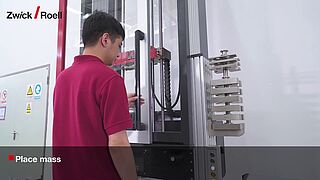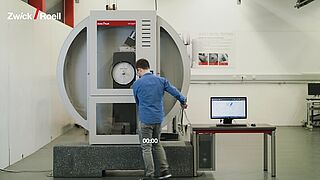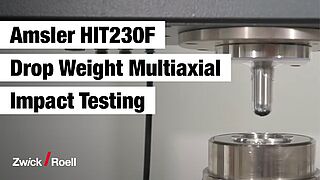Impact Testers and Charpy Impact Testers
...the right impact test equipment for standard-compliant testing!
Impact testers help determine the failure behavior of materials or components under rapid loads and changing temperatures. Because many materials used for a number of different applications on a daily basis are subjected to fluctuating temperatures, and since the fracture or failure behavior also depends on temperature, these materials must often be tested in their entire operating temperature range. These tests are used to indicate at what temperature and to what extent the material becomes brittle.
Pendulum impact testers Drop weight testers Rebound resilience tester
Impact tests on plastics Impact tests on metals Videos FAQ Customer cases
ZwickRoell impact strength testing machines: the right pendulum impact testers and drop weight testers for your applications
Impact testing has become firmly established in materials and components testing. The properties determined are part of basic material characterization. ZwickRoell has been delivering quality impact test equipment for years. Our product line includes pendulum impact testers for metals and pendulum impact testers for plastics, drop weight testers with an energy range of only a few joules to 100,000 joules, as well as hydraulic high-speed testing machines.
- The energy range of our machines spans from 5.5 joules (pendulum impact testers) to 100,000 joules (drop weight testers).
- Our impact testing machines are available in conventional (non-instrumented) and instrumented versions.
- Our specimen temperature conditioning box and magazine ensure precise specimen preparation and standard-compliant testing.
- The use of automated solutions with our impact testers further increases reliability and cost-effective test processes.
With just one click you, can learn more about our different options for impact testing:
Impact tests on metals
For impact tests on metals, ASTM E23 permits a speed that can also be maintained with the HIT50P. This requires special accessories.
| Type of test | Product/ method standard | Potential energy [J] | Speed [m/s] | Upper measurement limit in % of the rated initial potential energy | Instrument standard |
| Charpy | ISO 148-1 | n.s. | 5 ... 5.5 | 80 % | ISO 148-2 JIS B 7722 |
| EN 2003-1 | 300 (others are permitted) | 5 ... 5.5 | n.s. | EN 2003-3 Ident. BS 131-4 1972 | |
| ASTM E23 | n.s. | 3 ... 6. | 80%1 | None | |
| ASTM E436 | >2700 | >4.88 | n.s. | None | |
| Old DIN 50115 standard | ≤ 5.5 >5.5 ... 50 >50 ... 750 | 2.8 ... 3.1 3.6 ... 4 5 ... 5.5 | 80 % | ISO 148-2 JIS B 7722 | |
| Izod | EN 2003-2 | n.s. | 3.5 ± 0.5 | n.s. | EN 2003-3 Ident. BS 131-4 1972 |
| ASTM E23 | n.s. | 3 ... 6 | 80 % | None |
n.s. = not specified
- Measured values can be valid in some cases even if limit is exceeded.
| Type of test | Product/ method standard | F range [kN] | Speed [m/s] | Measurement uncertainty Force [% Fact] | Transmission frequency min. [kHz] | Instrument standard | Lower measurement limit | Upper measurement limit in % of the rated initial potential energy | Potential energy [J] |
| Charpy | ISO 14556 | 1 (for Fa) to 40 (for Fm) | 5 ... 5.5 | 1 % In the F range 10 ... 100 % Recommended for striking edge only | 100 Increase time: 3.5 µs) | EN 10045-2 ISO 148-2 JIS B 7722 | n.s. | 80 % | n.s. |
n.s. = not specified




